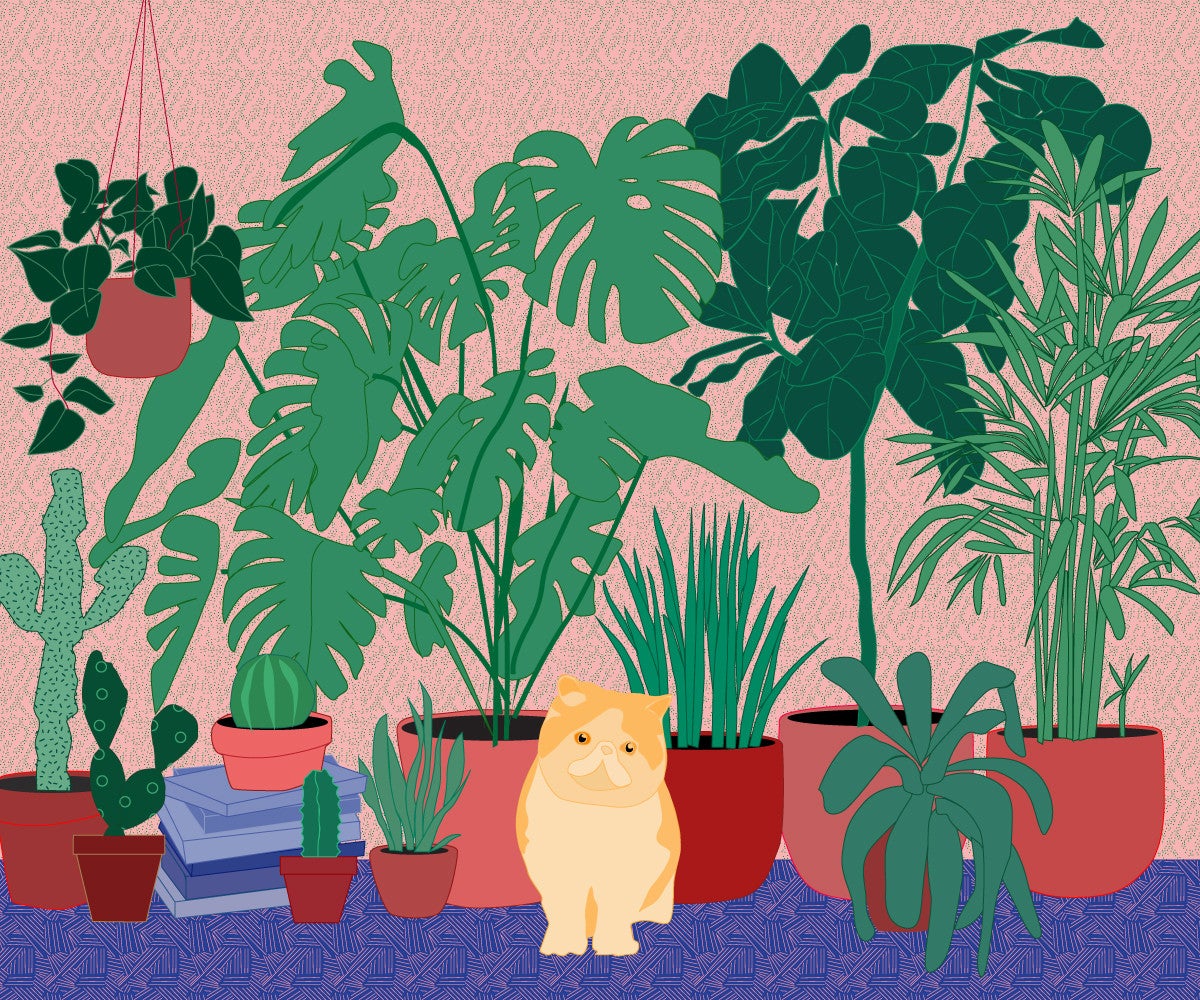Your Guide to Buying Plants That Won’t Kill Your Pets
Enjoy greenery and save yourself a trip to the vet.
Published Jun 30, 2017 6:00 AM
We may earn revenue from the products available on this page and participate in affiliate programs.
These days, houseplants are a decor staple. From trendy succulents to fiddleleaf fig and kangaroo paw ferns, most design-conscious people have at least a few bits of green scattered throughout their living space. Not only do they add a much-needed element of nature to indoor areas, but they’re lovely to look at and rewarding to take care of (when they’re flourishing, at least.)
But as wonderful as plants may be, for people who love animals having furry friends around the house is generally even more amazing. The only problem, however, is that plants and pets don’t always mix, especially when it comes to adorably curious puppies and kittens who will eat anything and everything. Here, find out which plants are safe for your littlest family members, and which should be avoided at all costs.
These Plants Get The Green Light
Some of the most fashionable plants right now actually get the stamp of approval. “Air plants and some ferns are typically safe to have around the house if you have pets,” says Caitlin Ultimo, Chewy Resident Pet Expert. Not all ferns are safe, but the Boston fern, a total classic, is a great option.
Money trees and spider plants are also among Ultimo’s picks for safest plants, as well as African violets and orchids. “These do not contain toxins that would be harmful if chewed by dogs or cats,” explains Dr. Judy Morgan, an author, speaker, and holistic veterinarian specializing in pet nutrition.
Now, for the really good news: Your precious succulents are pet-friendly—for the most part. “Some of the most popular varieties are non-toxic,” says Dr. Danielle Bernal, DVM, a veterinarian who works with Wellness Natural Pet Food. “These include Hens-and-Chicks, Ponytail Palm, Burro’s Tail, and Christmas cactus.”
Lastly, while cacti don’t necessarily have toxins that will harm your pet if eaten (although they may get an upset stomach), the spines can be painful if they get embedded in their skin. “Definitely do not put one at eye level where an eye could be scratched,” Morgan advises.
Plants You Should Avoid
“Plants that contain cardiac glycosides are particularly toxic,” says Morgan. Basically, these are substances that typically make the heart beat harder and slower, causing serious health risks. These plants include the foxgloves (Digitalis purpurea and Digitalis lanata), oleander, lily of the valley, ouabain, dogbane, squill, Star of Bethlehem, and wallflower. “The toxins in these plants are considered moderate to life threatening,” she says. In other words, you definitely don’t want your pets eating them.
“Bulb plants in the lily family, including tulips, can cause nausea, vomiting, diarrhea, and depression, particularly if the bulbs are eaten,” Morgan notes. The most dangerous lilies are tiger, day, Asiatic, Easter, and Japanese show lilies, and these are especially toxic to cats, she says. Even just a small amount of these can cause major distress for an animal. Azalea, rhododendron, and and sago palm should not be kept in homes with pets.
Another category to be avoided is holiday plants, according to Ultimo. “Poinsettias, holly, and mistletoe are included in this category. These plants are considered decorations and are usually left out in places that are easy for a dog or cat to access,” she says. The berries of the plant are especially toxic.
Train Your Pets Not to Eat Plants
Luckily, they can be trained not to do this. “If your dog or cat can’t keep their paws off of your plants, try a deterrent training aid like PetSafe Ssscat Pet Deterrent,” she recommends. “It will keep pets away from off-limits areas with its motion-activated pet-safe spray that spritzes when your pet comes near.” Also, while the strategy of placing dangerous plants up high and out of reach on a windowsill, shelf, or plant stand may not work for cats, it should do the trick for smaller dogs who can’t jump up.
What to Do If You’re Not Sure About a Plant
Finding something you love in a plant shop is the best, but if you’re not sure whether it will be harmful to your pet, there are a few simple ways to check. “When shopping at garden centers, employees will commonly know the answer, but with internet access on your phone, it’s pretty easy to search pet poison websites, which will list toxic plants, level of toxicity, and which part of the plant is toxic,” says Morgan. After all, better safe than sorry.
